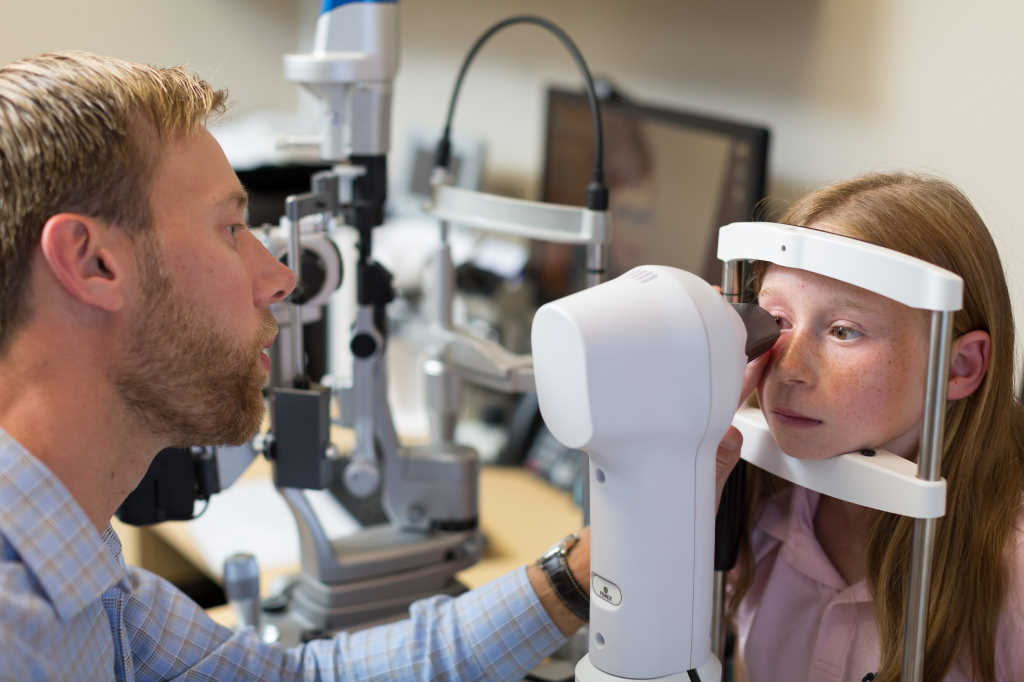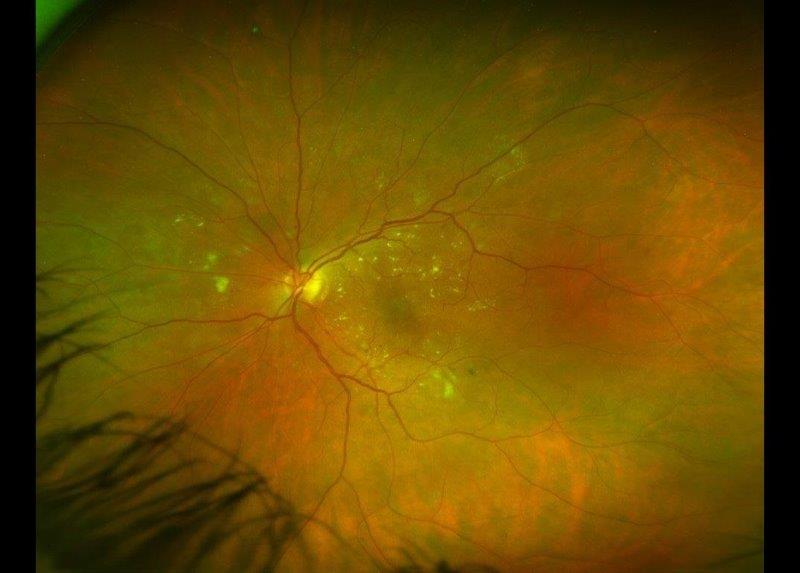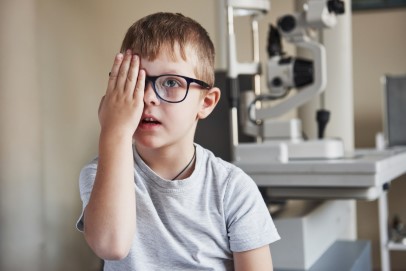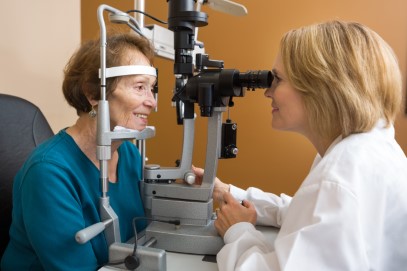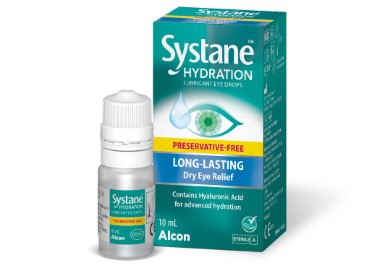2020: Year of the orthokeratologist
I have been offering ortho-k to patients for about a decade and I am still impressed by what this modality has to give.
In the post Covid-19 economic recession, we will no doubt find ourselves in, traditional practices relying on frame sales for their bottom line may struggle, so it’s a perfect time to invest in yourself and your practice and differentiate. All you need is a corneal topographer, then you can offer patients a vision correction option they will love that will create loyalty and further word-of-mouth referrals, helping your practice grow in the years to come.
So, why do I think ortho-k’s so compelling?
1. The results are great!
Patients will typically achieve excellent uncorrected vision, often much better than 20/20. All of this with the benefit of having no lens use when they are at work, especially if they work in dusty environments, or at school.
Ortho-k is superior to soft contact lens use and glasses for physical activities, especially water sports, and is a perfect option for allergy and dry eye sufferers. But don’t take my word for it: a cross-over study¹ was conducted where 65 adult patients were fitted first with either ortho-k or soft contact lenses for two months and then swapped. They rated their experiences with a quality-of-life questionnaire. In all but one category, participants found their ortho-k experience equal or better than soft contact lenses. A key category that reached statistical significance was fewer symptoms with ortho-k (Table 1.) After the study, nearly 70% of participants chose to continue with ortho-k wear vs ~30% who went with SCLs. Interestingly, when broken down into refractive groups, above 3.00D, modality preference was much more similar, suggesting things such as glare and refractive stability balanced out the lifestyle advantages of ortho-k - a useful aspect to consider when offering ortho-k to higher myopes.
Table 1. Comparison of quality-of-life scores (0 worst, 100 best) between ortho-k (OCR) and soft contact lenses (SCL) show equal or better scores for ortho-k in all categories, except glare. Modified from Lipson 2005¹
In another questionnaire-based study³, the satisfaction of children wearing ortho-k (n=31) and spectacles (n=30) over two years were retrospectively evaluated. The ortho-k kids had significantly better ratings for overall vision, distance vision, symptoms, appearance, satisfaction, activities, academic performance, handling and peer perception than the children wearing glasses.
2. Ortho-k treatment is a key tool in the battle against childhood myopia progression
Hopefully everyone out there is aware that childhood myopia is increasing around the globe and that treatment options exist to slow axial length growth in kids - typically, atropine eye drops, soft multifocal contacts like Coopervision’s Misight lens and ortho-k treatment. On average, in simple terms, these slow myopia progression by ~50%, however not all children will be suitable for every treatment and not all children will respond in the same way; myopia progression can still occur. Thus, having knowledge about and access to all treatment options is crucial to give patients their best chance at success.
Ortho-k has particular advantages for kids who want to be free from their glasses: active, sporty children and kids with astigmatism, as currently soft contact lens options for myopia control do not correct for astigmatism.
I also like prescribing ortho-k for myopia control due to the convincing decrease in axial length progression, not just refraction, that studies report. In recent times, questions have been raised about the axial length control possible with atropine*. The only study I could find directly comparing myopia control modalities, retrospectively analysed axial length change in 125 ortho-k patients compared to a matched group of 125 0.125% atropine patients³ – note this is a higher concentration than the 0.01-0.05% we typically use. After three years the ortho-k group had changed by 0.85mm on average versus 1.11mm for the atropine cohort.
3. Ortho-k wear is safe
Perhaps the biggest concern we hear about ortho-k is the notion that overnight wear of rigid lenses is unsafe, especially from ophthalmology, who unfortunately are the ones left cleaning up the mess of microbial keratitis (MK). This concern was also not helped by the shambles that occurred in Asia in the early 2000s with unregulated ortho-k prescribing being rife. If your lenses are not fitted properly and tap water is being used to clean them, what do you think will happen!? This resulted in China banning ortho-k lenses for a few years and then strictly controlling their use. Unsurprisingly infection numbers dropped⁴.
Mark Bullimore’s data⁵ from 2013 is probably the most relevant to review: his study examined the records of 1317 US patients, roughly half adults, half kids. Two MK episodes occurred but none caused any visual acuity loss. This gave a MK risk with ortho-k wear of 7.7 per 10000 patient years; less than extended wear SCL (25/10000) but higher than daily disposable SCL (1.2-2/10000)⁶. Clearly, all contact lenses have some risk but we have to remember this is low in the greater scheme of things. Australian anti-myopia champion, Kate Gifford shows that by combining studies we see that the lifetime risk of myopic maculopathy in a 5-7D myope is three times higher than the risk of MK in paediatric ortho-k!
None of my ortho-k patients in a decade of prescribing ortho-k have had an infection, so I strongly believe ortho-k lenses are safe, provided that appropriate patient advice and training, lens disinfection and practitioner follow-up care occurs.
4. Ortho-k lens options, support and resources have never been better!
Due to growing concerns about the rise of myopia and high myopes, research and development into ortho-k lenses has flourished. In New Zealand, we are lucky to have a number of suppliers distributing ortho-k lenses, including Corneal Lens Corporation (CLC), with the Forge range, designed with home-grown fitting software Eyespace, and Brighten Optix range; Ophthalmic Instrument Company (OIC) with Australia’s Gelflex lenses, the Paragon CRT system and the Euclid Emerald range; and Queensland’s Capricornia, which designs and distributes BE Retainer ortho-k lenses.
Ortho-k is not just for low myopia, many ortho-k designs can correct high myopia, significant astigmatism or hyperopia, and be used for blended vision for presbyopia management. Start discussing ortho-k with all your patients and you will be surprised how quickly you start fitting them.
Having a trial set or software system of course means nothing. You need training and support to provide the best results for your patients. Most lens designs will have their own training resources and often require a fitting questionnaire to be completed before you begin. Talk to suppliers to find out what might be best for you and your patients – I find Eyespace’s online knowledge base and blog particularly good. All of this only scratches the surface, however. Becoming an ortho-k guru takes years of experience, so it’s a great idea to ask a more learned practitioner to be a mentor at the beginning; most will be only too happy to assist. I would also recommend attending the Orthokeratology Society of Oceania’s annual beginner’s bootcamp or its biennial conference’s beginner’s stream, plus there’s a wealth of different online myopia education courses available and a plethora of speciality lens publications, as well as the recently released Contemporary Orthokeratology, which covers all the essentials and is freely available at contemporaryorthokeratology.com.
So go on, ‘flatten the curve’ in your practices in 2020 with orthokeratology!
References
- Lipson MJ et al. Overnight corneal reshaping versus soft disposable contact lenses: vision-related quality-of-life differences from a randomised clinical trial. Optom Vis Sci 2005
- Santodomingo et al. Myopia control with orthokeratology contact lenses in Spain: a comparison of vision-related quality-of-life measures between orthokeratology contact lenses and single-vision spectacles. Eye Contact Lens 2013
- Lin et al HJ, Overnight orthokeratology is comparable with atropine in controlling myopia. BMC Ophthalmol. 2014
- Song et al. Pediatric microbial keratitis: a tertiary hospital study. Eur J Ophthalmol. 2012
- Bullimore et al. The Incidence of Microbial Keratitis with Overnight Corneal Reshaping Lenses. OptomVis Sci. 2013
- Stapleton F et al. The incidence of contact lens-related microbial keratitis in Australia. Ophthalmol. 2008
Alex Petty is a New Zealand optometrist based at Bay Eye Care in Tauranga, with a particular interest and knowledge in specialty contact lenses, ortho-k and myopia control. He is vice-president of the Orthokeratology Society of Oceania and a founding member of the NZ Myopia Action Group. He has no financial interest in any of the companies mentioned in this article.
*https://eyeonoptics.co.nz/articles/archive/which-low-dose-atropine-for-myopia-control/









